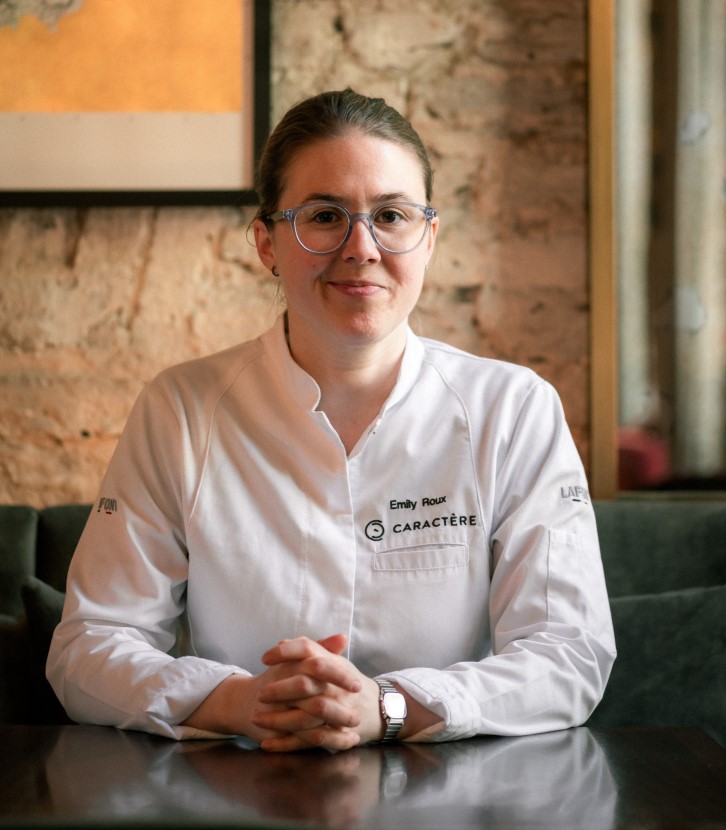In December 2020, two restaurants in Tokyo — French restaurant L’Effervescence and Chinese restaurant Sazenka (茶禅華) — were awarded the highly coveted three MICHELIN Stars, the highest accolade handed out by the MICHELIN Guide.
In this two-part series, we trace the trajectory of these two restaurants’ journey to becoming three-Star restaurants.
RELATED: Meet The Chefs Behind Tokyo's New 3-Star Restaurants: L'Effervescence's Namae Shinobu
Opened in 2017, Sazenka (茶禅華) is tucked away in a smart residential area, Minami-Azabu, which is a distinguished location within the Tokyo metropolitan area.
The restaurant resides in the renovated building of a former German ambassador’s residence and comes with a main dining area, and both large and small private dining rooms. The elegant interior creates a chic atmosphere which adds to the general feeling of comfort.

Large porcelain plates from Jing De Zhen, a region in China known for its long history of porcelain craftsmanship, adorn the walls leading up the restaurant's stairwell — a gift from chef Seiji Yamamoto of Ryugin(龍吟), whom Tomoya Kawada, head chef of Sazenka (茶禅華), credits as a mentor.
Beyond the Stars

Born in 1982 in Tochigi Prefecture, Kawada grew up in a family that loved eating out, has liked Chinese cuisine for as long as he could remember. In his kindergarten graduation album, he even wrote “I want to become a chef”, he recalls laughingly.
In order to achieve his dream, he built up his culinary chops by training at a Chinese restaurant in Tokyo. Then, to learn more about Japanese ingredients he went to work at Ryugin (龍吟). It wasn’t just techniques he learned there, but the essence of Japanese cooking: drawing out the maximum potential of ingredients.
He joined Sazenka as a chef in 2017, and led the restaurant to gain its two stars in 2018, followed by three Stars in 2021.
READ MORE: These Are The Newly Starred Restaurants In The MICHELIN Guide Tokyo 2021
Bridging cultures
Building on the traditions from both countries, Kawada is breaking new ground. His aim: to not just create a fusion of Japanese and Chinese cuisine but to create a natural overlap between the two, striving for harmony between Japanese and Chinese cultures, he explains. He wants to take his predecessors thinking, and pass it on into the future.
In other words, he respects the natural order of past, present and future, while applying Japanese ingredients and techniques into the traditions of Chinese cuisine. A case in point is Sazenka's dish of Japanese pheasant soup, which is prepared by adding dashi in the soup base, and wrapping local Japanese pheasants in Chinese wonton skins. Dishes like this could be said to be Chinese food with a Japanese spirit, thus defying conventional culture boundaries.

The idea of Wakon Kansai (和魂漢才) — the marriage between Japanese spirit and Chinese scholarship — he points out, is an ideological concept that was born in Japan in the middle of the Heian period. Just like how kanji characters were first introduced from China long ago and modified and adopted by Japanese people, chef Kawada's aim is to take Chinese cooking and converge it with Japanese ingredients and the Japanese spirit.
Another outlook that Kawada has adopted from Chinese culture is the idea of Shinmiha Tadakoretan (真味只是淡) — literally translated as "the true taste of food is light and simple", or a reminder to stay modest even when one is talented — an outlook that chef says is similarly reflective of Japanese culture.

Classic Chinese culture is also expressed in Sazenka's playful menus, which describe each dish using just four kanji characters — a deliberate design, say Kawada, to stir the imagination of diners and leave them to ponder the possibilities of dishes that could appear on their dining tables next.
The restaurant also places emphasis on its pairings of food with drinks. He aims to create a synergy by pairing the food with either wine, sake, or Shaoxing wine, or with Chinese or Japanese teas; or even pairings which mix both alcohol and non-alcoholic options.
Even when it comes to sustainability, the restaurant is one step ahead. Sazenka is part of the Chefs for the Blue organisation focussed on promoting the sustainability of the oceans, and the team is deeply committed to resolving issues such as food waste and plastic pollution.

The restaurant derives its name from the word tea (茶), which represents a shared experience with others; zen (禅), which represents an experience within oneself; and flower (華), derived from the term for China (中華). Both tea and Zen were concepts first introduced from China and then further developed in Japan.
Respecting the deep-rooted histories of both cultures, while also pursuing innovation and sophistication through a lens unique to both diners from Japan and abroad, eventually led the restaurant to become Japan's first three-Star Chinese restaurant.

















